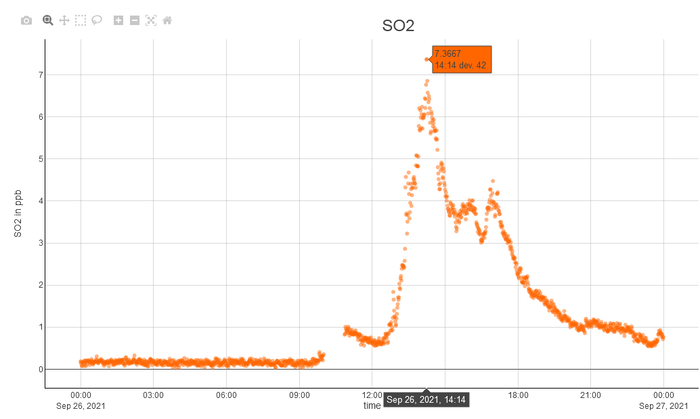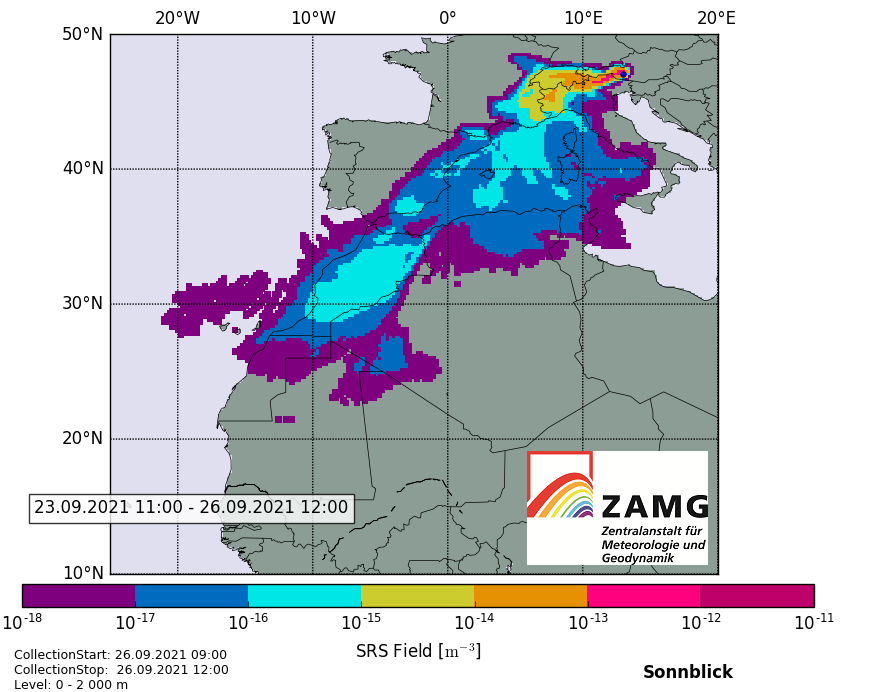Eventful measurements at the Sonnblick observatory
The events of September 26th, 2021 show how sensitive the measuring devices are at the Sonnblick Observatory. An increased dust mass concentration was detected in the early hours of the night and morning. After verification of the data (trajectories, negative exponent of the single scattering albedo), this event is Saharan dust. This can be seen very clearly in the graphic (dust mass concentration, TSP mass). In the afternoon the volcanic eruption of the Cumbre Vieja, a nearly 2000 meter high and 14 km long volcanic chain, on the Canary Island of La Palma in the dust mass and sulfur dioxide concentration could be measured. The increase can be clearly seen on the graphic illustration. The maximum value measured was 7.3667 ppb, which corresponds to 19.3 µg / m³ (SO2: 1 ppb = 2.62 µg / m³). However, this value is harmless to health and is far below the alarm limit. The data on this event can be accessed via our data portal at https://data.sonnblick.net/dataset/abb980f4.
 |
The graphic below shows the SRS field for September 26th (Source Receptor Sensitivity, German: Quell-Rezeptor-Sensitivität, QRS). For such questions, the model is used in what is known as the reverse mode. In other words, the dispersion calculation is not carried out from a known source, but from a defined measuring station. The meteorological input data are included in the model in reverse chronological order. The spread of the dispersion cloud then shows which areas (and the sources located in them) could have made a contribution to immission concentrations at the relevant station at which times.
 |